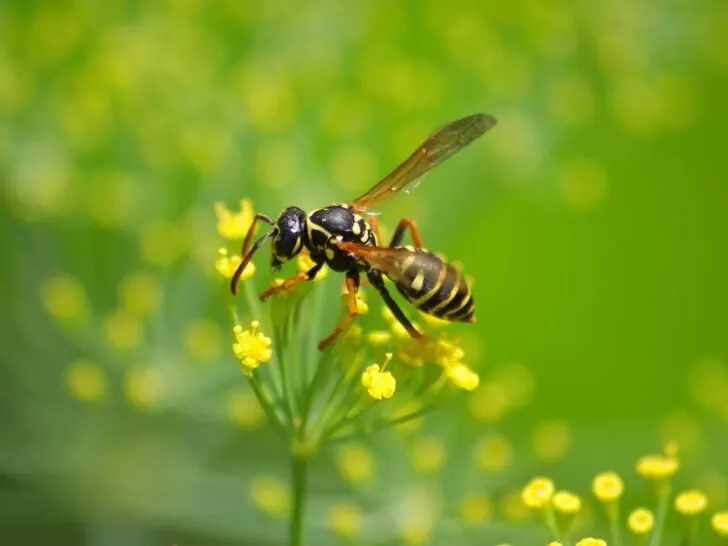Every few summers, I get stung by bees or wasps while hiking. Usually, it’s because I stumble across an underground nest I didn’t know was there. Stinging insects are a fact of life while hiking. But there are some ways to avoid them.
After hearing reports of tons of wasp nests on my local trails during a particularly hot and dry summer, I did a bunch of research to find out how to avoid bees and wasps while hiking and what to do if you see them or are stung.
I’ve put together a complete guide to bees and wasps for hikers. It includes:
- Bees, wasps, hornets, and yellowjackets: Which insects are which? And why does it matter?
- What attracts bees and wasps? Why are they buzzing around in some places and not others?
- How to avoid wasps and bees while hiking – Which places and times of year should you avoid?
- What to do if you see wasps and bees – And more importantly, what not to do.
- What do if you discover a wasp nest or bee hive – How can you avoid getting stung?
- What do if you get stung by a wasp or bee – Essentially first aid info for hikers.
Bees, Wasps, Hornets, and Yellowjackets: What’s What?
If it’s black and yellow and buzzing around, most of us freak out a little. But it can be helpful to figure out which insect is bothering you since some of them are more of a problem than others.
I’m definitely not an entomologist (a scientist who studies insects) but I have learned a little bit about how to tell bees from wasps. In general, bees are fatter and fuzzier while wasps, hornets, and yellow jackets are skinnier and sleeker.
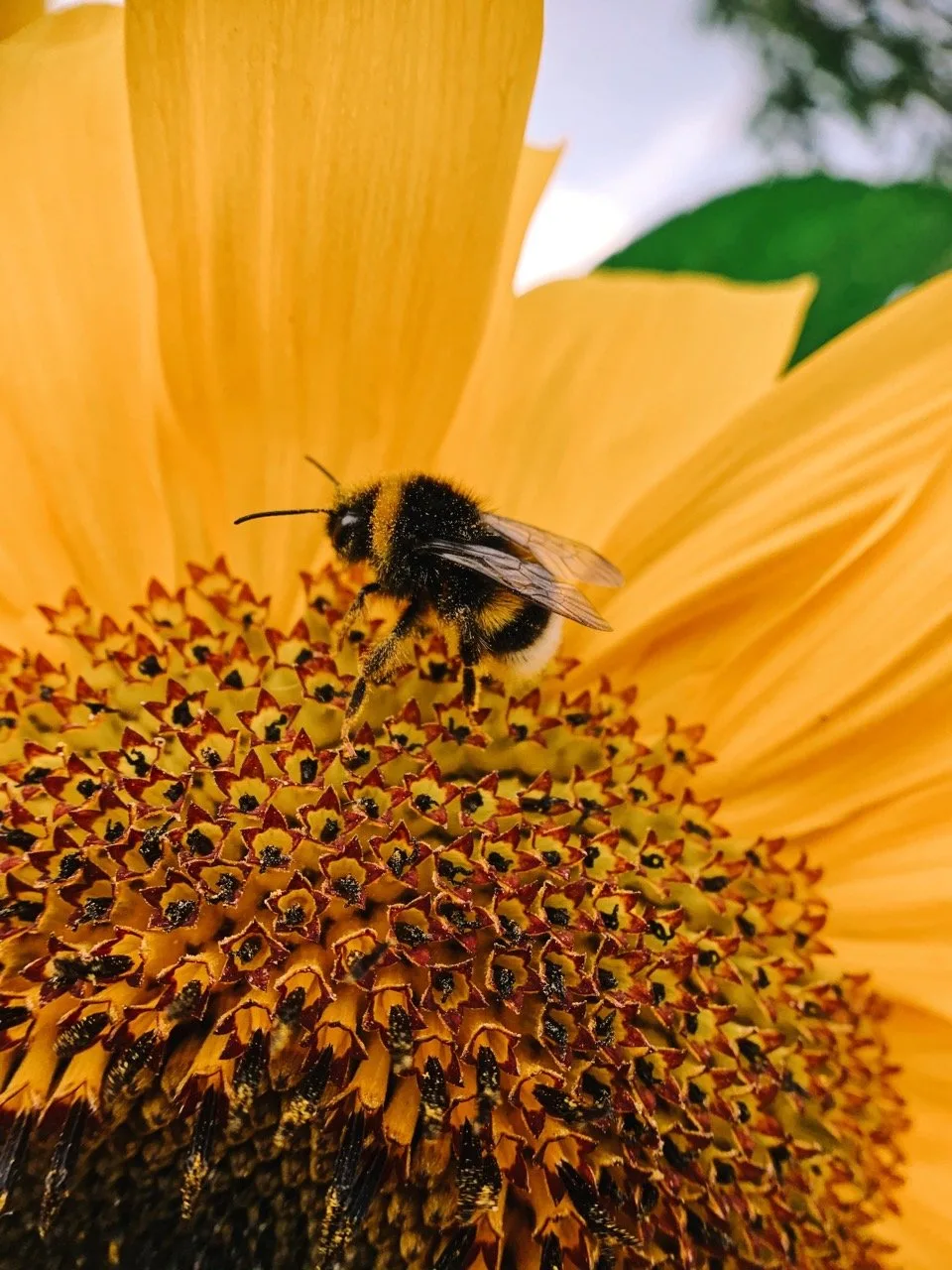
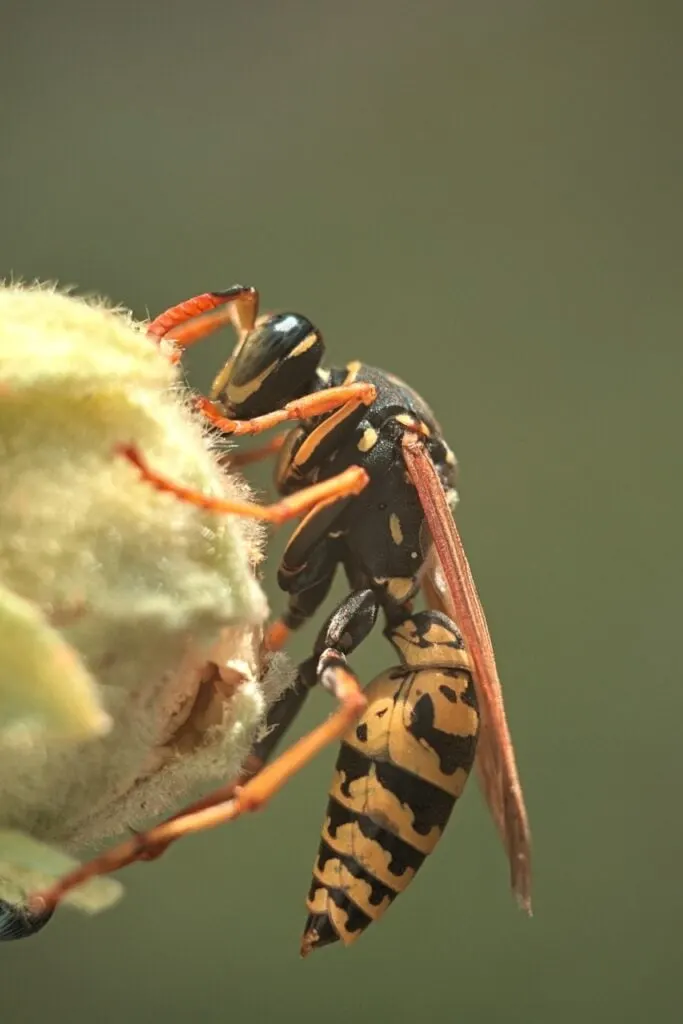
Bees can only sting you once, while wasps, yellow jackets and hornets can sting you over and over again.
While researching this post I found out that yellow jackets and hornets are both actually types of wasps! Yellow jackets are smaller than other wasps but more aggressive. Hornets are some of the biggest wasps and can also be very aggressive.
Yellow jackets, some species of wasps, and some kinds of bees build their nests in in the ground. Hornets, some kinds of bees, and some kinds of wasps build their nests in trees.
In general, wasps, especially yellowjackets, are the most dangerous for hikers since they can sting multiple times, are aggressive, and build their nests in the ground where hikers can accidentally step on them.
What Attracts Wasps and Bees?
Sugar and Meat
Wasps and bees are attracted to flowers since they depend on their nectar for food. But they also like all other sources of sugar, such as fruit trees and human food. They also love meat and rotting food. Wasps have a strong sense of smell and will fly long distances if they smell something they think is tasty.
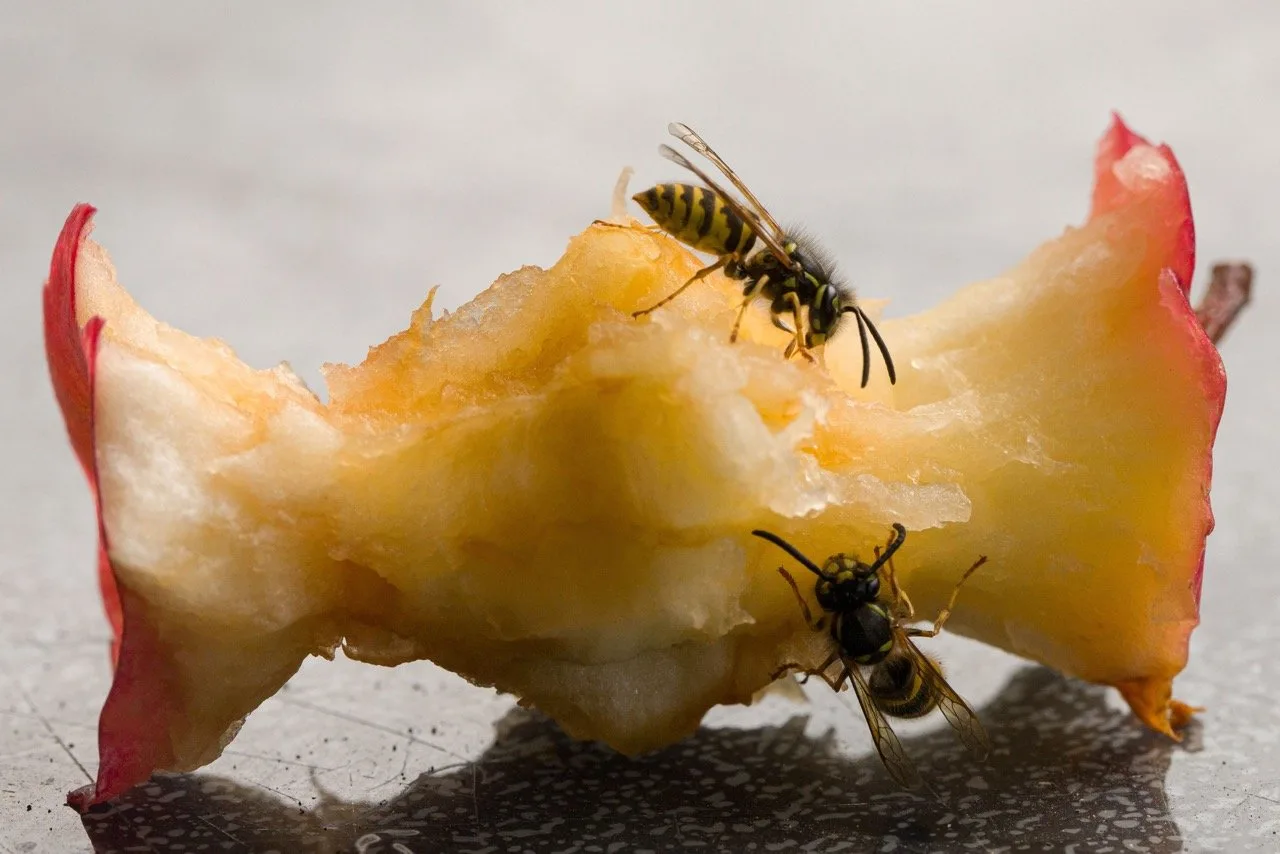
It would be easy to say that you shouldn’t bring sweet food, fruit, or meat hiking, but honestly, hikers need to eat too. If you are worried about wasps, take short breaks to eat instead of long meals. That way you can eat quickly before lots of wasps show up.
Bright Colours
Wasps and bees like bright colours since they are the same colour as flowers. Experts seem to agree that avoiding bright-coloured clothing might make you less attractive to bees and wasps.
Floral and Fruity Scents
This one is another no-brainer – bees and wasps like the scent of flowers and fruit since that’s what they eat. Avoid wearing perfumes, lotions, or other products with a floral or fruity scent when you go hiking.
How to Avoid Wasps and Bees While Hiking
The only surefire way to avoid wasps and bees is to stay indoors all the time… and that’s not realistic. If you’re going outside during spring, summer, and fall, you are probably doing to encounter wasps and bees. However, there are some ways to pick hikes with less wasps and bees.
Avoid areas with flowers like alpine meadows, which typically bloom in July and August (Check local trail conditions to find out when peak bloom is.)
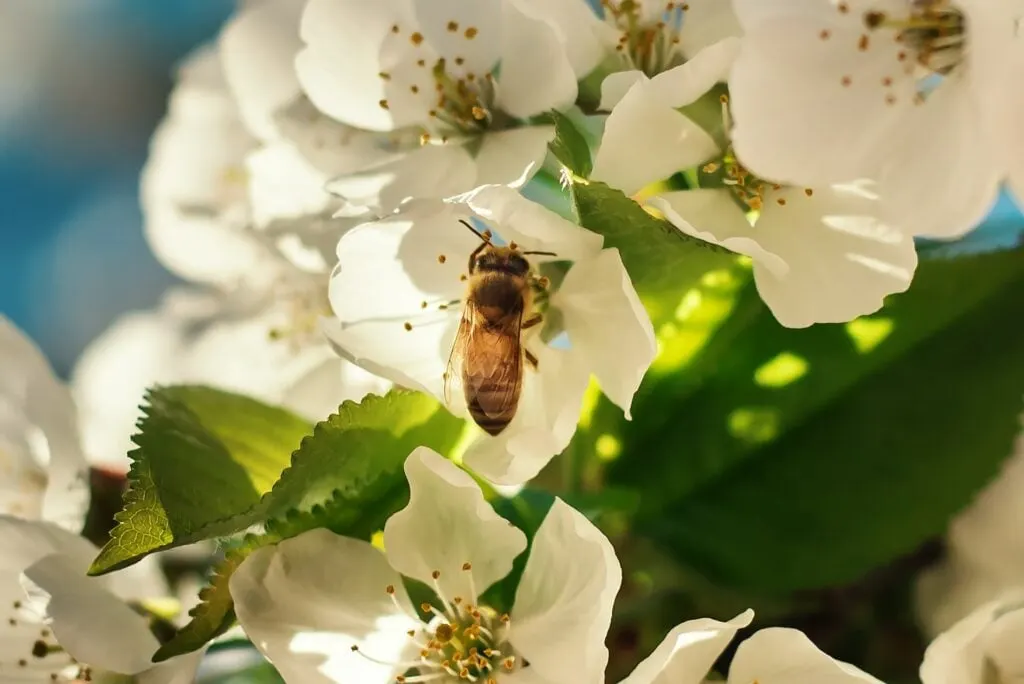
Avoid areas with lots of ripe fruit, such as berry bushes. In North America, huckleberries and blueberries are common on trails, along with many other berry species. The berries ripen in the spring at lower elevations and in the summer at higher elevations. Check local trail conditions to see if it is prime berry season on the trail you plan to hike.
Read trail conditions reports on park websites or apps like All Trails. You can often find reports of active wasp nests near trails. However, new nests pop up all the time, so just because there isn’t a warning about a nest doesn’t mean you won’t encounter one on the trail.
How to Repel Wasps and Bees
Unlike mosquitos, repelling wasps and bees isn’t as simple as applying bug spray. In fact, insect repellent sprays don’t work on wasps and bees. DEET and picaridin, the two most effective mosquito repellents, do nothing for wasps and bees.
There are lots of “natural” wasp-repellent recipes online made of essential oils. In general, these wasp deterrents tend to use peppermint, citrus, lemongrass, clove, or geranium.
However, most of these recipes are designed to be used in your yard or on your deck. They aren’t designed to be applied to your body, where they are easy to sweat off.
Unfortunately, the best way to repel wasps and bees is just to avoid them.
What to Do if You See Wasps or Bees
If you see a wasp or bee flying around while hiking, don’t freak out. In most cases, the wasps are just doing their thing, looking for food. They don’t care about you and will leave you alone.
Avoid swatting at the wasp or swinging your arms around. Wasps may perceive that as a threat and get defensive, which means they might become aggressive toward you. Instead, walk calmly away from the wasp or bee.
If you are eating, and the wasps are interested in your food, finish quickly, then put the food away. After the food is gone, the wasps will likely leave you alone.
What to Do if You Discover a Wasp Nest or Bee Hive
How to Spot a Nest
Above-ground nests in trees are much easier to spot than underground nests. In both cases, listen carefully for buzzing – the sound of hundreds of bees or wasps is often audible before you see the nest.
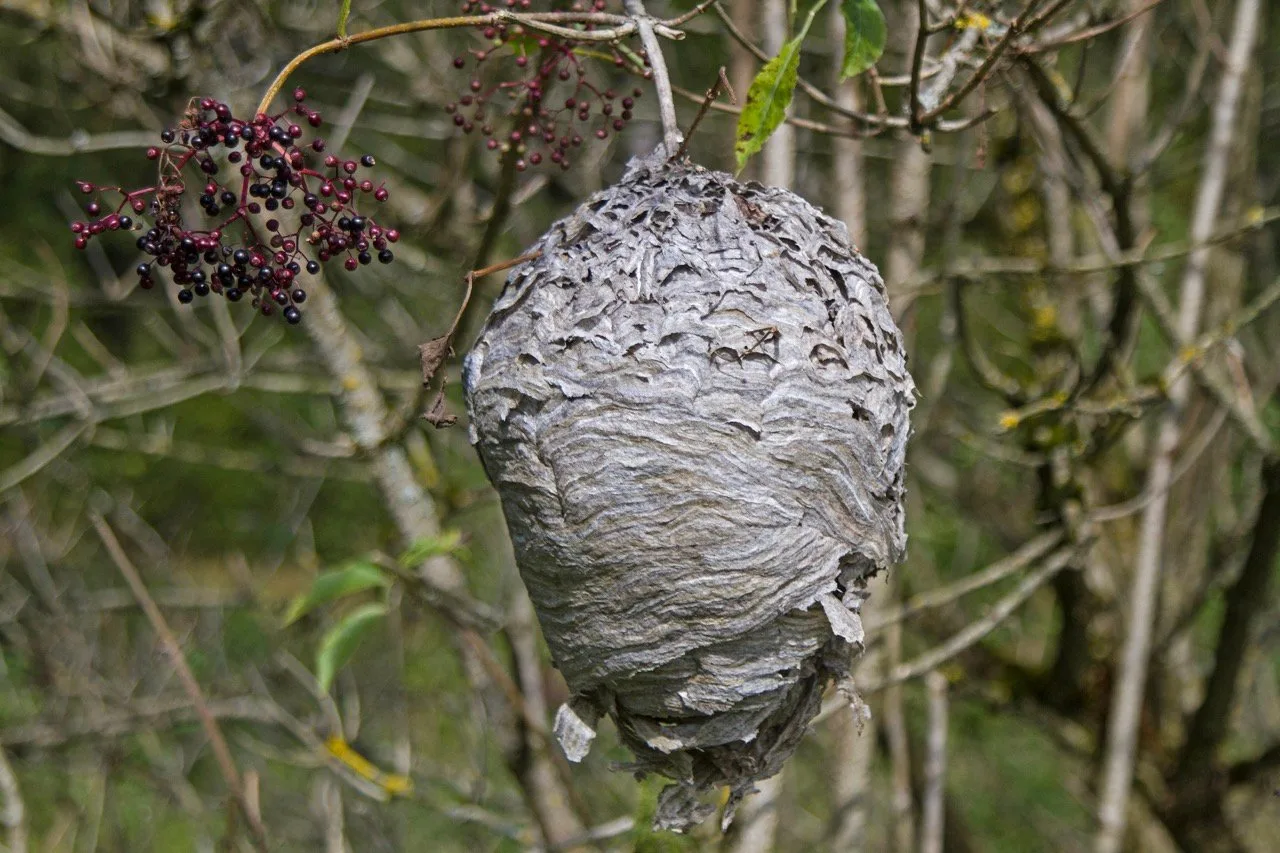
Unfortunately, underground wasp nests are very hard to detect until you are almost on top of them. Each year, countless hikers get stung when they unknowingly walk past an underground wasp nest.
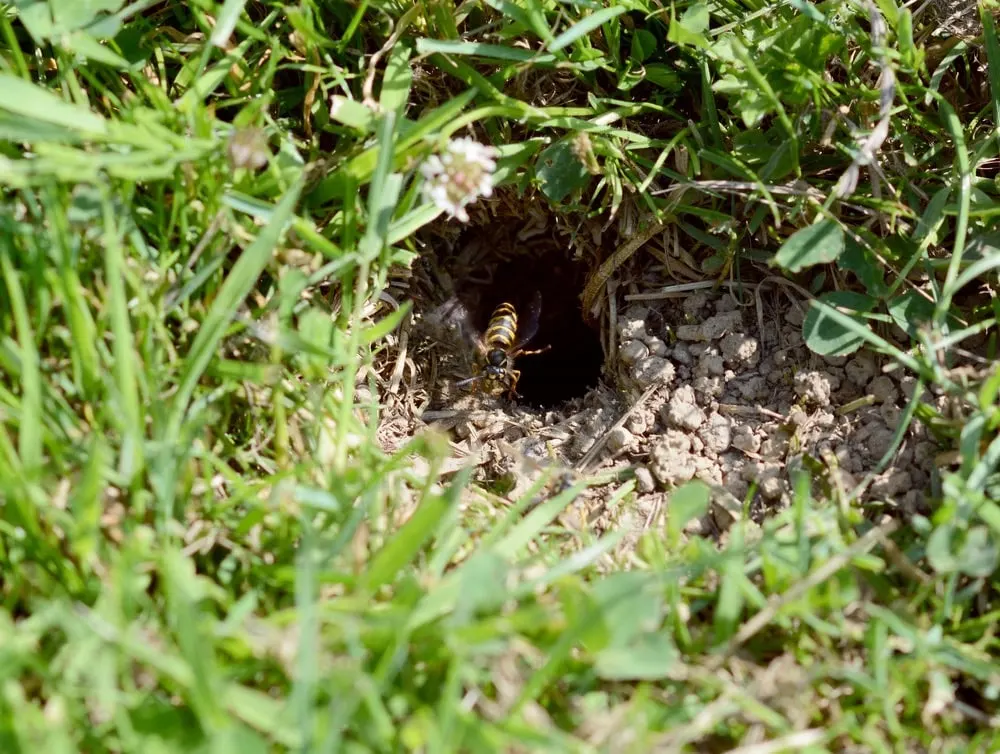
When you walk past a wasp nest, the wasps often swarm out, defensively stinging you.
Wasps are the most aggressive in late summer, especially during hot and dry weather. This is because food is scarce at this time of year.
What to Do Once You Spot a Nest
If you see a wasp nest or bee hive, leave the area immediately. Wasps and bees will defend their homes aggressively and will sting you if you try to get close.
If you discover a wasp nest unexpectedly, run! If you run 100-200 metres/yards away, the wasps will stop chasing you as they want to stay and defend their nest. Don’t jump into the water as they will just wait on the surface for you.
If you see a wasp nest and the wasps haven’t swarmed out, yet, protect yourself by covering up as much exposed skin as possible with long pants and jackets. Then run past the nest, one at a time.
Space out your group so that the wasps have flown back inside the nest and aren’t agitated by the time the next person runs. In my experience, if you run too close together, the wasps sting the second person a lot more than the first!
Warn Other Hikers
Once you have discovered a nest, be a hero and warn other hikers on the trail about it and/or post a trail conditions report on AllTrails or other trail forums. If possible, try to put up some flagging tape or a small sign 100 metres/yards before the nest in both directions as a warning. And tell park rangers about it so they can warn more people
What to Do If You Get Stung By a Bee or Wasp While Hiking
Bee and wasp stings hurt a lot at first, but thankfully, the pain subsides quickly for most people. Once you get to a safe place away from the wasp or wasp nest, it is important to perform a little bit of first aid.
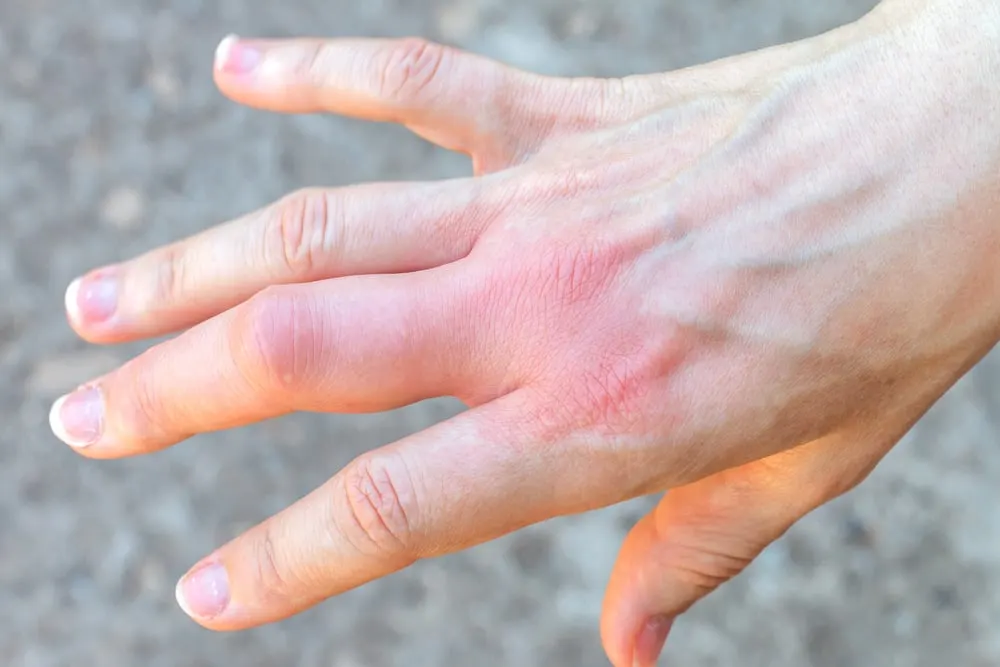
To start with remove the stinger. You can do this by using tweezers or scraping along the skin with the back of a knife or a credit card.
Next, clean the area with soap and water to remove bacteria and venom. If you don’t have soap, you can use hand sanitizer, then flush with water.
If the bite is painful or itchy, you can apply an anti-itch ointment like After Bite. You can also take antihistamines to reduce the itching and anti-inflammatories like ibuprofen to reduce pain and swelling.
Another way to get relief and reduce swelling is to apply cold water or an ice pack. When hiking, the easiest way to do this is to put the affected area in a creek, river, or lake.
If you have a wasp or bee allergy, it’s important to carry your epi-pen on all hikes. You never know when you will encounter these stinging creatures. And of course, make sure your hiking companions know about your epi-pen and how to help you use it in an emergency.
If you are stung in the mouth, nose, or throat, the swelling can obstruct your airway and make it difficult to breathe. In that case, get emergency assistance as soon as possible by calling search and rescue.
So that’s everything you need to know about bees and wasps while hiking. Fingers crossed that these tips help you avoid getting stung.
READ NEXT:
- The 10 Essentials: Things You Should Bring on Every Hike
- 16 Things to do Before a Hike
- Bear Safety for Hikers, Campers and Backpackers
- How to Prevent Blisters When Hiking
- 300+ Hiking Terms Explained: A Hiking Glossary
- 10 Things to Do in Penticton in Summer - July 16, 2025
- Lake O’Hara Packing Lists for Hikers and Campers - April 25, 2025
- BC Parks Day Passes 2025 – Everything You Need to Know - April 24, 2025

